A beautiful start to the morning. Not a cloud in a blue, blue sky. It was chilly when we first woke in Poki, though. Only 1.8 degrees, but it soon warms up as the sun rises. It had been a reasonable night, although we were woken by a couple of trains on the track not far from us. Just one or two carriages, so gone quickly.
Today’s drive to Uyuni was probably one of the best we have had in South America. A good road, pothole free, not too many speed bumps and very little traffic, with stunning and varied scenery.
There are few speed bumps, as we bypass the few towns en route, only passing through a few small villages. It is a drive through quite remote countryside with isolated communities and small subsistence farms.
The road took us through valleys between the mountains, so we didn’t climb steeply. There seemed to be more downs than ups. Whenever possible Dennis would descend in “Māori overdrive” or neutral, coasting down hills to save fuel.
At first we were in a very wide open valley with green grass near the very spread, when flowing, river. There were thousands of llamas, goats, sheep and donkeys grazing.
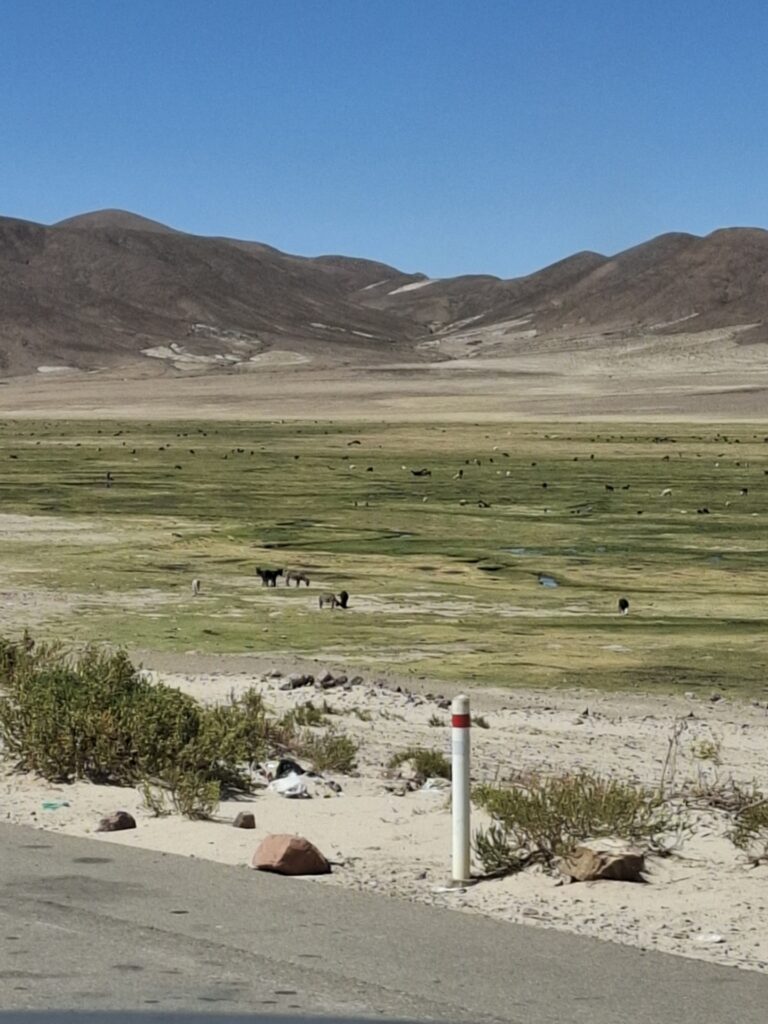
This then changed to an area growing cacti of all shapes and sizes.
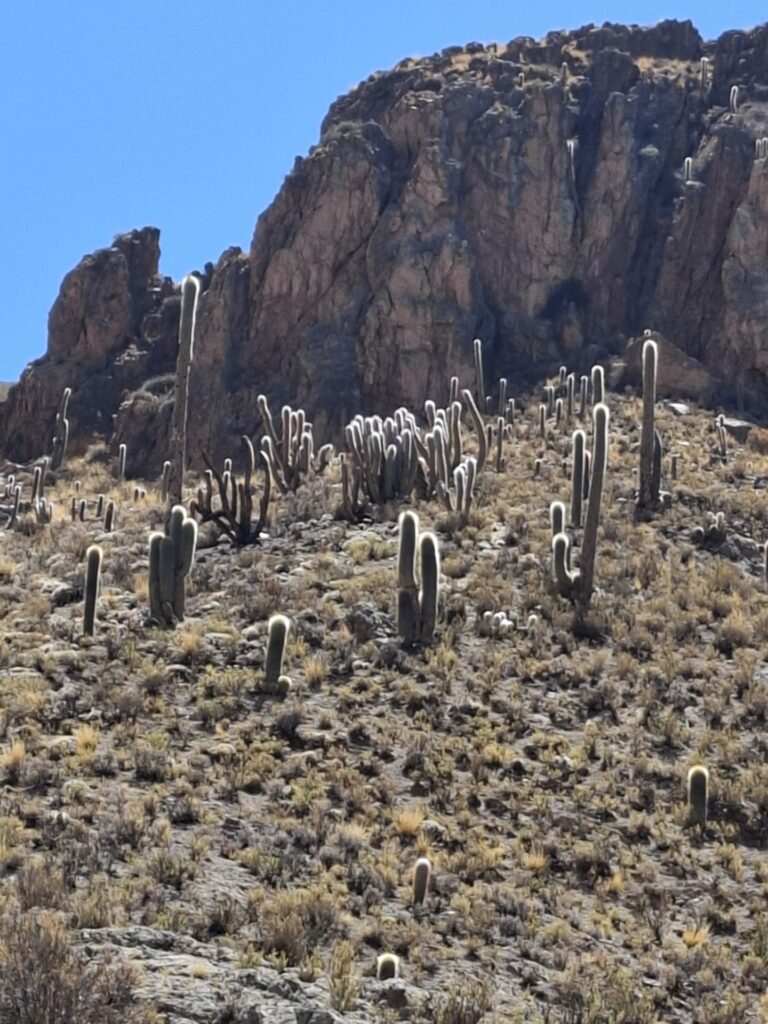
Soon followed by dark red, almost burgundy rocky mountains. Where the river flowed through here there were bright green trees. A type of willow and a cypress shaped tree. Obviously, not a cypress, but I have no idea of the species.
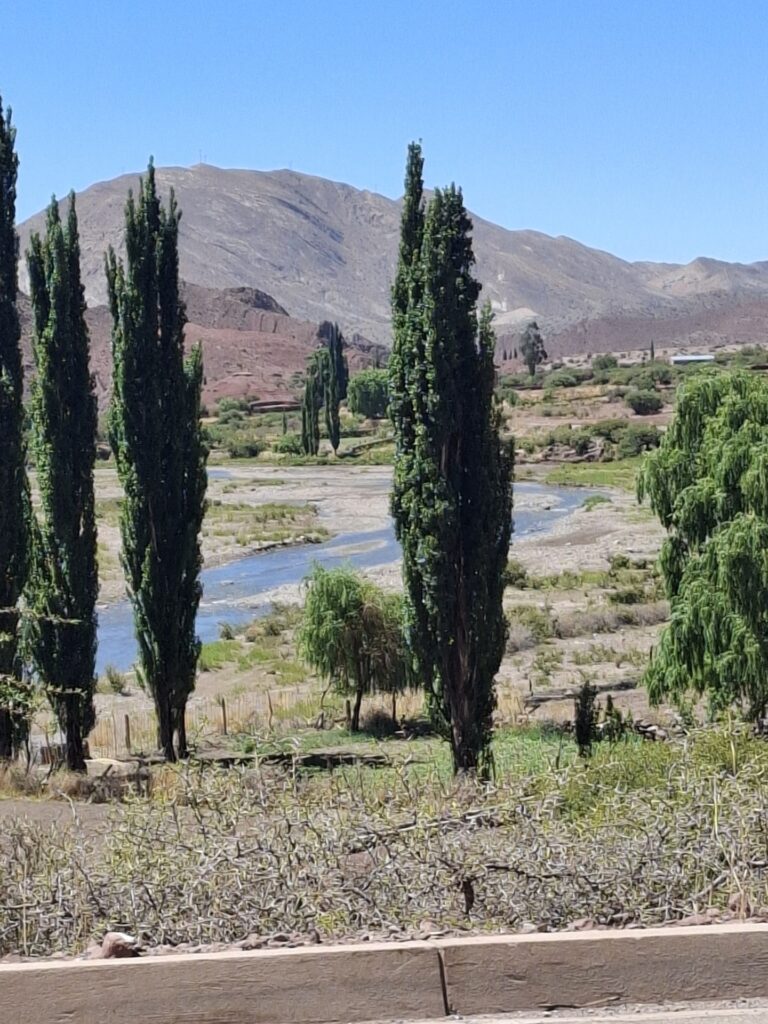
Later the scenery became more barren, but vegetation wasn’t necessary. Such dramatic rock formations and a huge range of different hues. In some parts of the world you pay to see a “rainbow” mountain. Here there were whole ranges of every possible colour.
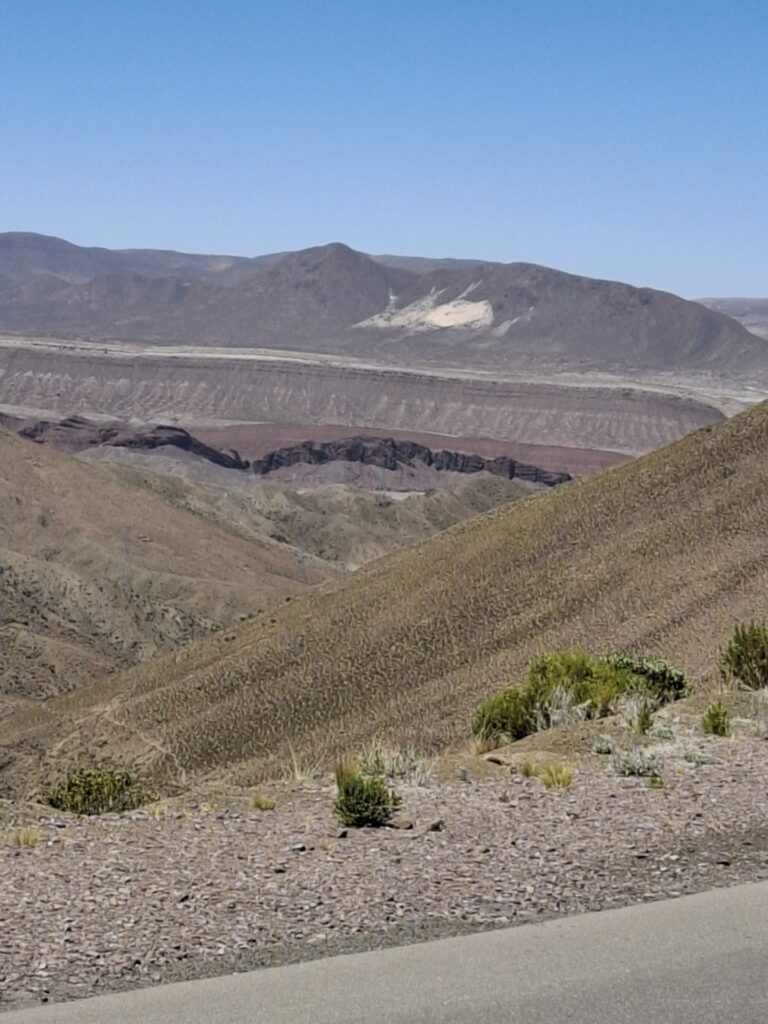
Throughout Bolivia we have noticed in the countryside small kit-set type houses, bringing modern living to rural areas. All of a similar design and colour scheme, white walls and a bright blue roof with a black water tank. The roof has a symbol, but we don’t know what it stands for. We haven’t been able to find out who is building them. Anyone with any information, please let us know.
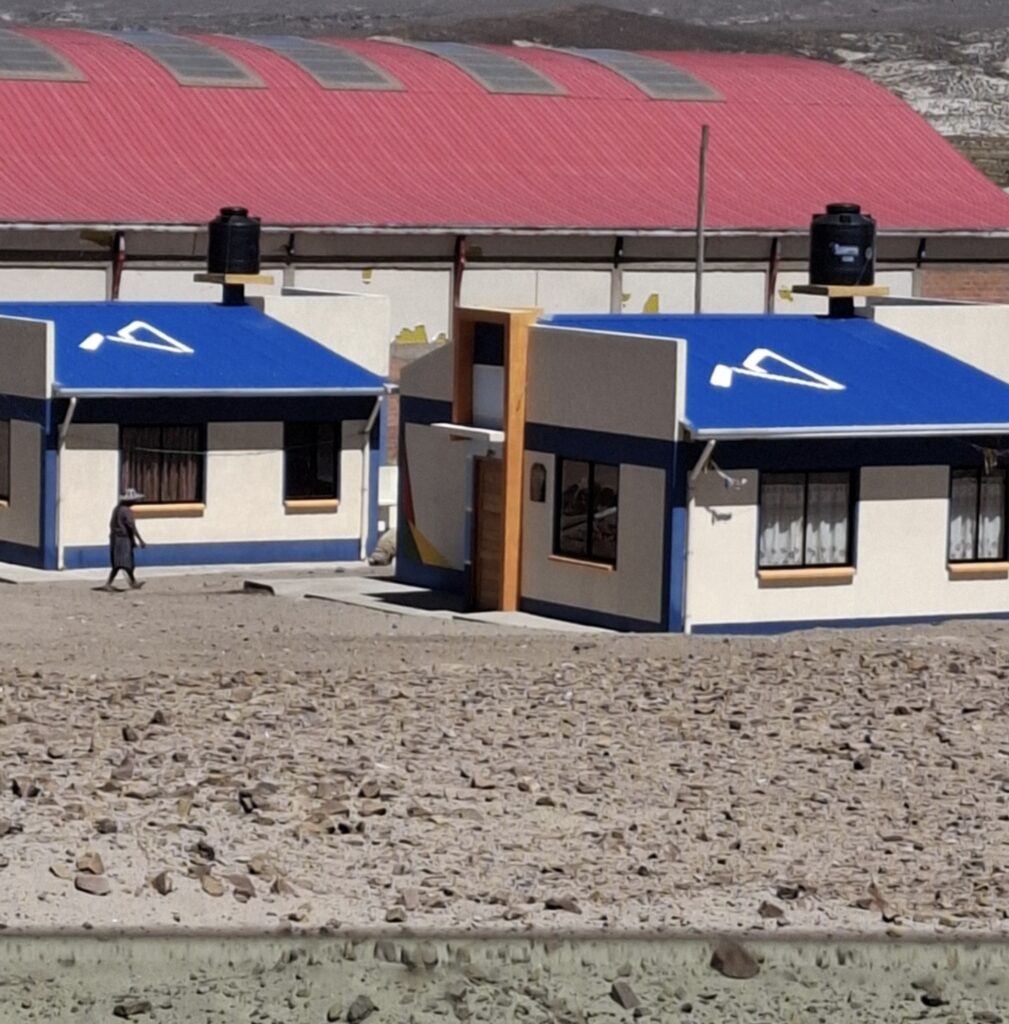
Andean Ladies
Another thing that intrigues me is the attire of the older Andean ladies. The tend to be tiny and look very fat. They can’t all be fat so it has to be the design of their voluminous skirts. They must have numerous petticoats underneath. I don’t know if it’s for warmth or fashion. Many wear tiny bowler hats, perched on their heads, too.
Many older ladies wearing this type of dress also carry huge bundles on their backs. Made from a large piece of colourful woven cloth, gathered together and slung over their shoulder. Perhaps goods being taken to a market stall?
Pulacayo
The last town we passed before reaching Uyuni was Pulacayo. Overlooked by large mines, there is still active mining going on here. Research reveals this was once a very significant silver mine. Today more than 34,000ha of mining concessions are currently being explored. These contain 50% silver, 25% zinc and 25% lead. The mines are owned by a Canadian company, Apogee Mining Ltd.
Uyuni
We reached Uyuni early in the afternoon. On our way into the town there were some wonderful views of the salt flats. It is very different to recent towns and cities being completely level. Although the main streets are paved with large block paving, they appear to be dirt as there is so much dust. The smaller streets are all unpaved, the source of a lot of the dust.
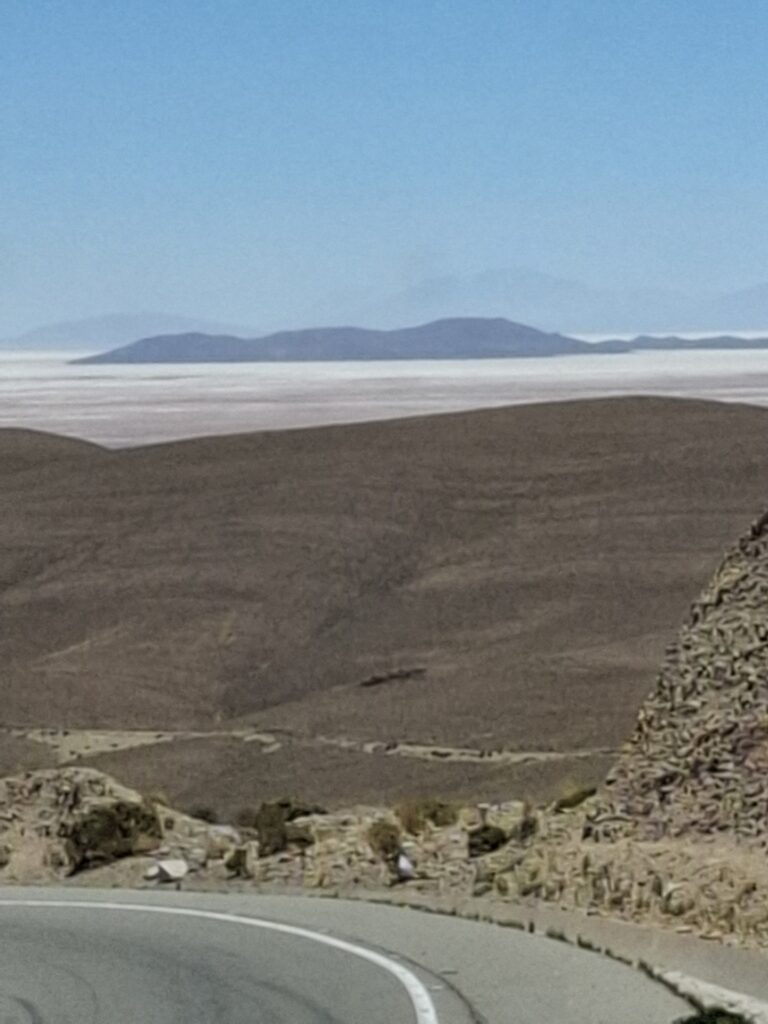
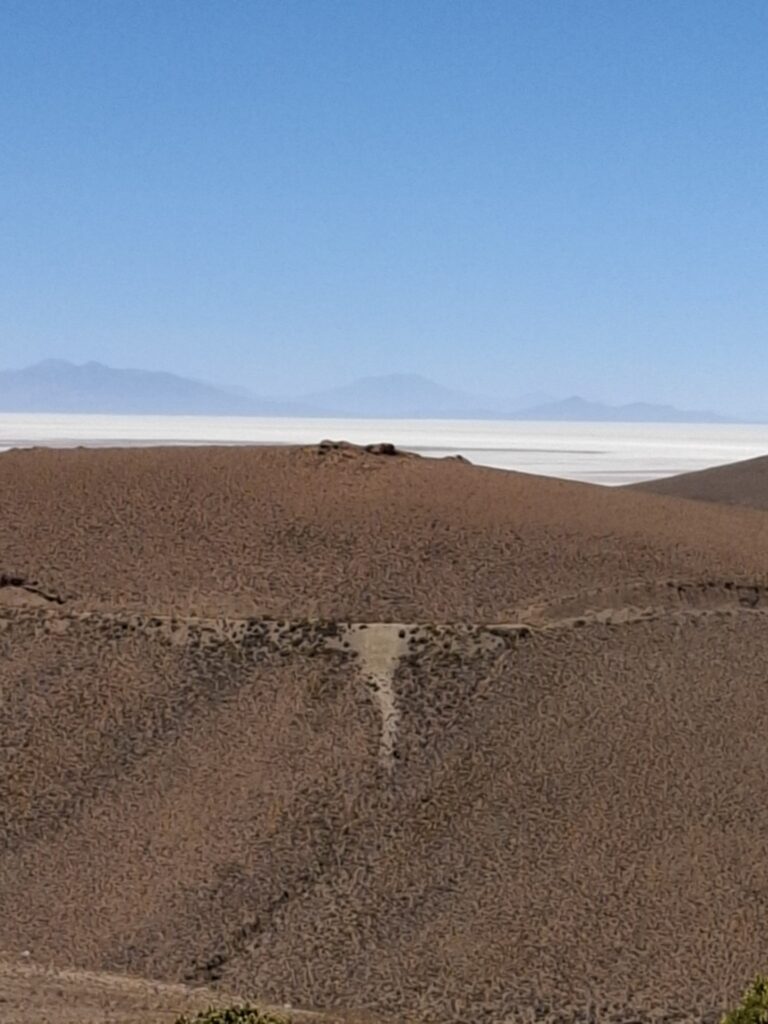
Our first task when reaching Uyuni was to top up my Tigo SIM card so we have WiFi again. It appears Tigo is a poorer choice. The lady in the shop topped it up, but it wasn’t working. Entel is a better provider, but we hadn’t been able to get an Entel SIM. Driving around the town, we found a kiosk selling Entel. I now have Entel and so we should have WiFi, at least until we leave Bolivia.
Pierre, at our camp in Sucre, had recommended a hotel here, the Hotel Nido del Flamenco. There is parking for campers. We could have camped but the parking lot was dusty and uneven, I asked the hotel owner, Rafael, how much the rooms were. He said 300 Bols or USD45. I thought that was expensive, so he said as the hotel was empty, we could have a room for Bols 150. Hence, we are now very comfy, in by far the smartest place we have seen in Bolivia.
We have also asked Rafael if he is able to assist us with obtaining some diesel. We don’t think we have quite enough to get us to the Argentinian border. He says it’s a problem, but he will get back to us. We’re still awaiting an answer, at the moment.
Because of the fuel situation, we have decided to do a tour into the Salar de Uyuni (salt flats) tomorrow, rather than drive ourselves. Also we won’t need to get the salt washed off Poki afterwards. It will be a group of 6 people in a Toyota Land Cruiser. We will be picked up at 10.45 and returned at about 8pm, so will see the sunset over the salt flats.
Salar de Uyuni
The Salar de Uyuni is the largest salt flat in the world. For much of the year it stretches in a seemingly endless expanse of white, with a salt crust covering 10,000 square kms (4,000 square miles). It was formed by the gradual evaporation of several prehistoric lakes and is now covered by a few meters of salt crust. This serves as a source of salt and covers a pool of brine which is exceptionally rich in lithium.
Following rain, a thin layer of dead calm water forms the world’s largest mirror. The Salar forms a major transport route across the Bolivian Altiplano and is a prime breeding ground for several species of flamingos.
After a lovely day, the evening didn’t finish well. During dinner in Poki, I managed to break a chunk off a tooth. I hope it isn’t going to be troublesome. It’s a nuisance as I had a lot of dental work done before we left. I may finish up having to find a South American dentist.
Views: 69
